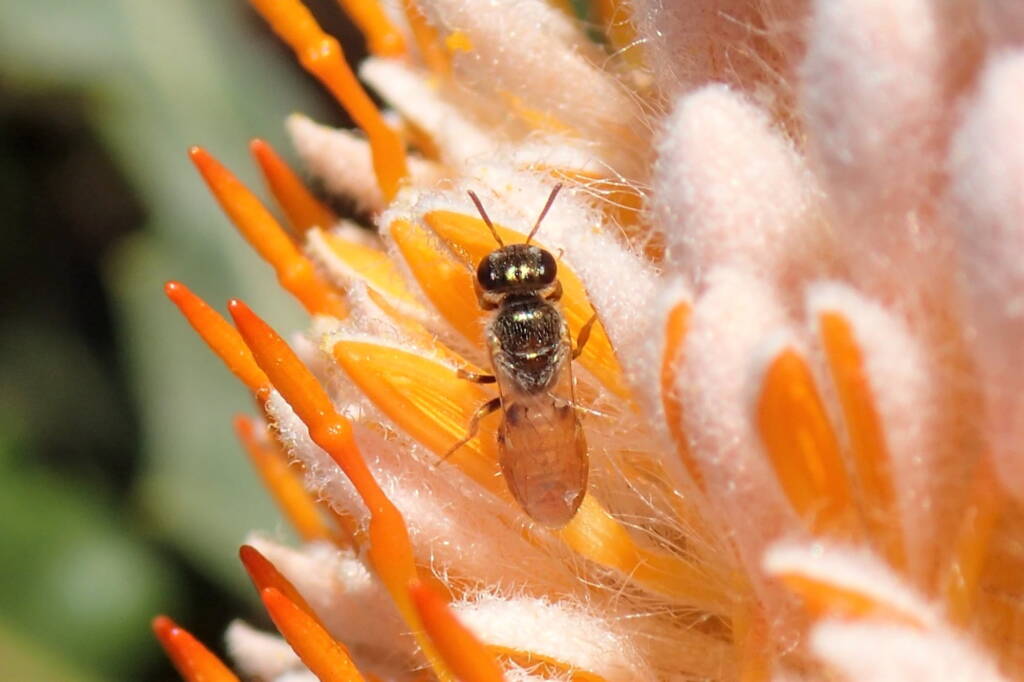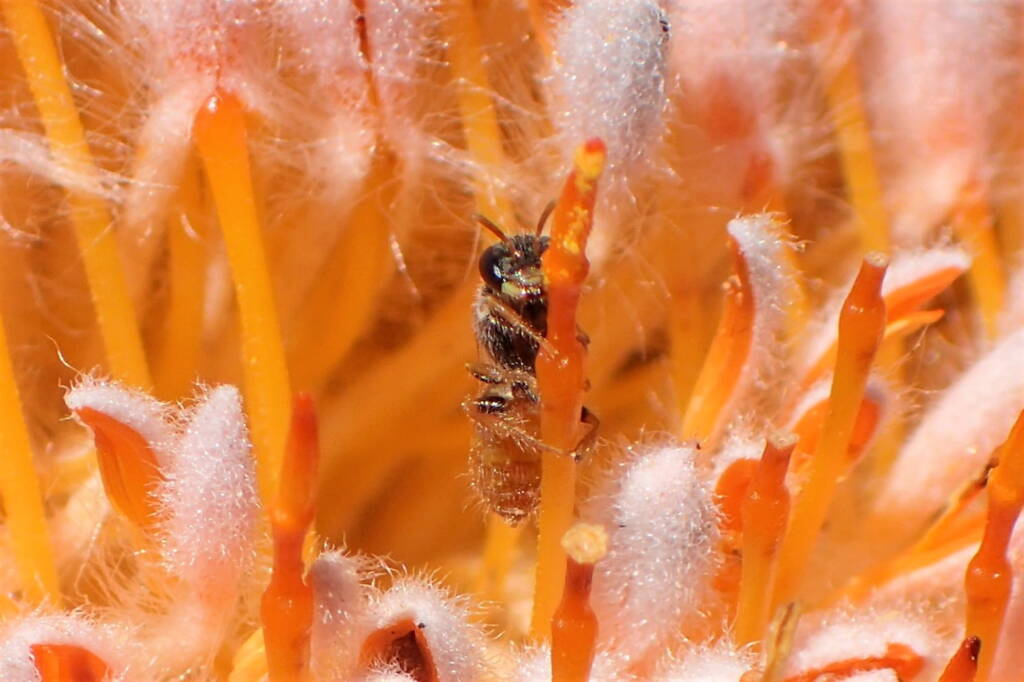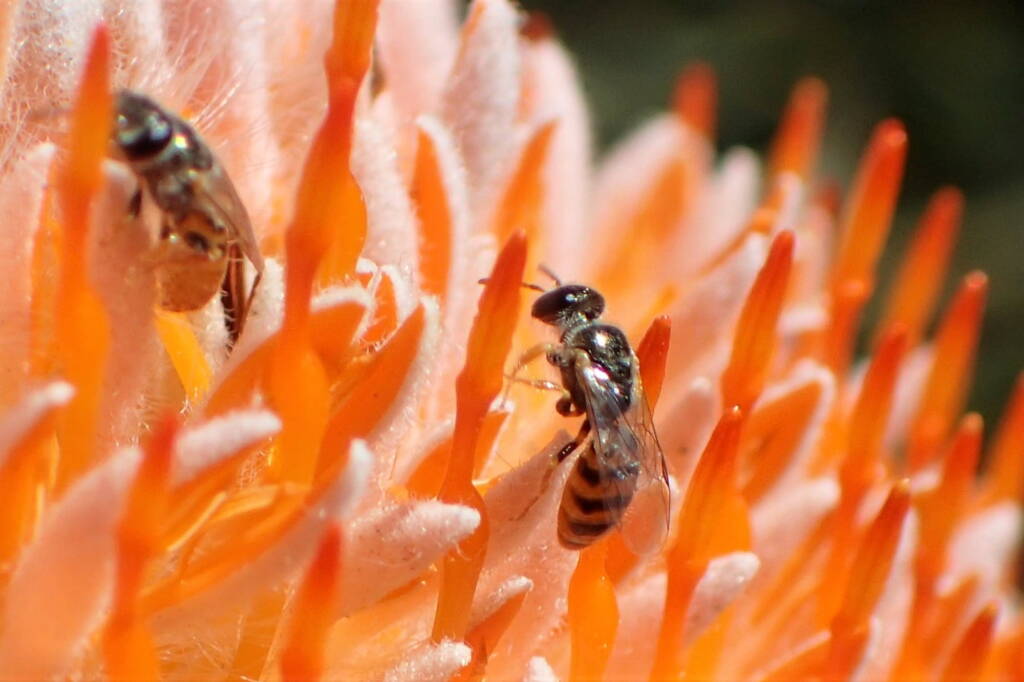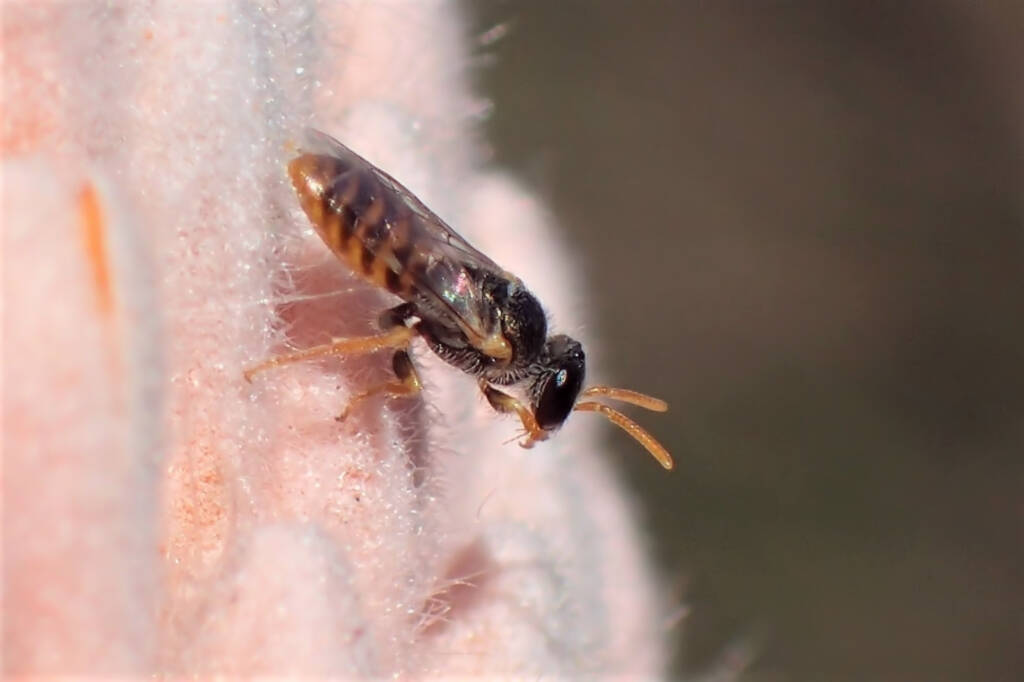EuryglossinaeIndex Callohesma Dasyhesma Euhesma Eurglossa adelaidae Euryglossa calaina Euryglossa ephippiata Euryglossina fuscescens Xanthesma
Contributor & Author Gary Taylor ◦
Euryglossinae is considered the most species-rich bee sub-family in Australia, with over 400 named species endemic to Australia. Endemic to Australasia, Euryglossinae together with Hylaeinae are the most abundant groups of bees in Australia that include some of the smallest species of bees in Australia. Included in the Euryglossinae is the minute yellow and black Euryglossina (Quasihesma) clypearis from Cape York, Queensland, with the claim of being the “smallest bees in the world”, the males being just 1.8 mm in length.
Document research have suggested that both the “Euryglossines and Hylaeines have adapted to swallowing both pollen and nectar with the high quantity of nectar used in provisioning allowing for a sufficient amount of liquid for regurgitating both materials back at the nest, thus negating the need for pollen-collecting scopae.” 2

It was pretty much over season-wise for a lot of our gorgeous little native bees. The Banded Amegilla (we don’t actually get the non banded types here in Midwest WA, the bombiformis Teddy bears or the greeny gold ones, so I tend to just call them Amegilla), the Megachile bees, the resin bees and leaf cutters along with many others are done for the year…
But it’s only just beginning for these little cuties. Coming in at about 4-5 mm long (for the one in the first three pics, the stripey ones in the last two pics are a couple of mm bigger), you’d be forgiven for thinking that stunning metallic shine and shape belonged to one of the Homalictus species butt… In this case the butt’s not the important bit, it’s the antennae, well not so much the antennae themselves but where they’re located…
Ok, hang on, I’ll back up a bit… Although distinguishing the difference between some species in a genus can be so hard it actually comes down to microscopic analysis of their genitals, literally a bee’s dick between them, there are usually simple “giveaway” physical traits that separate the families, even if they look a bit similar… In this case it’s the location of the antennae sockets, set well below the mid point of the eye. That tells me they belong to the Euryglossinae family, a sub family in the major family Colletidae.
As to genus, dunno… and not sure these are even the same species either. The tendency is to think the one without stripes is female, the banded one male but it’s unusual for the male bee to be bigger than the female and they seemed to have no compassionate interest in each other either so yeah, nah, dunno…
Anyway, these little cuties will soon be joined by at least half a dozen other species of Banksia loving bees, all either Hylaeine or Euryglossine and they’ll rule the native bee world in this patch for the next couple of months… 🙂
Author Gary Taylor
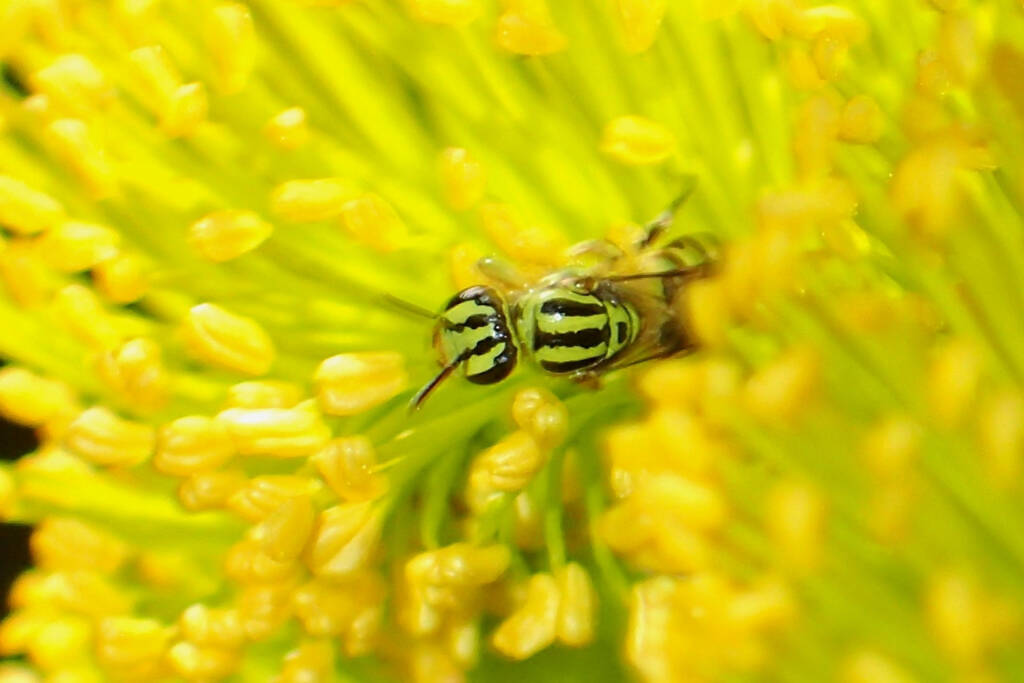
- Scientific classification
- Kingdom: Animalia
- Phylum: Arthropoda
- Subphylum: Hexapoda
- Class: Insecta
- Informal: Pterygotes
- Order: Hymenoptera
- Superfamily: Apoidea
- Informal: Apiformes
- Family: Colletidae
- Subfamily: Euryglossinae
- Genus
- Brachyhesma
- Callohesma
- Dasyhesma
- Euhesma
- Euryglossa
- Euryglossina
- Euryglossula
- Heterohesma
- Hyphesma
- Melittosmithia
- Pachyprosopis
- Sericogaster
- Stenohesma
- Tumidihesma
- Xanthesma

Footnote & References
- Euryglossinae, Photographs and content © Gary Taylor
- Euryglossinae, Atlas of Living Australia, https://bie.ala.org.au/species/urn:lsid:biodiversity.org.au:afd.taxon:d24f3c79-6982-41fd-988a-d2a278fb7528
- The Diversification, Biogeography, and Body Size Evolution of Australian Hylaeine and Euryglossine Bees, by Pelin Kayaalp, School of Biological Sciences Flinders University of South Australia, https://flex.flinders.edu.au/file/9ebab586-8994-466e-94dd-019f197e78e1/1/Thesis-Kayaalp-2011-01Abstract.pdf
- Australian National Insect Collection – Euryglossinae Bee Expedition 1, GBIF Global Biodiversity Information Facility, https://www.gbif.org/dataset/e7facd4a-7108-4506-b446-e7d69612d9f7
- The World’s Smallest Bees (Euryglossina (Quasihesma)), Aussie Bee, https://www.aussiebee.com.au/quasihesma.html
EuryglossinaeIndex Callohesma Dasyhesma Euhesma Eurglossa adelaidae Euryglossa calaina Euryglossa ephippiata Euryglossina fuscescens Xanthesma
BeesBees Anatomy Bee Behaviour Blogging Bees… Bees – image index Amegilla Bee Apis mellifera Austroplebeia australis Austrothurgus Braunsapis sp Ceylalictus perditellus Colletidae Euryglossinae Exoneura Homalictus Hyleoides bivulnerata Lasioglossum Lasioglossum (Chilalictus) Lipotriches Megachile Meroglossa Stenotritidae Tetragonula Thyreus Xylocopa

